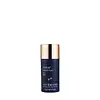What's inside
What's inside
 Key Ingredients
Key Ingredients

 Benefits
Benefits

 Concerns
Concerns

 Ingredients Side-by-side
Ingredients Side-by-side

Water
Skin ConditioningGlycerin
HumectantAloe Barbadensis Leaf Juice
Skin ConditioningMyristyl Myristate
EmollientCetyl Palmitate
EmollientTocopherol
AntioxidantStearic Acid
CleansingHydrogenated Vegetable Oil
EmollientParaffin
PerfumingPalmitic Acid
EmollientPetrolatum
EmollientDimethicone
EmollientHydrogenated Lecithin
EmulsifyingCetyl Alcohol
EmollientCaprylic/Capric/Myristic/Stearic Triglyceride
EmollientPhenoxyethanol
PreservativeTriethanolamine
BufferingLauroyl Lysine
Skin ConditioningCarbomer
Emulsion StabilisingGlycine Soja Protein
EmulsifyingPentylene Glycol
Skin ConditioningCaprylyl Glycol
EmollientChlorphenesin
AntimicrobialBisabolol
MaskingMyristic Acid
CleansingPentaerythrityl Tetra-Di-T-Butyl Hydroxyhydrocinnamate
AntioxidantSilybum Marianum Extract
Skin ConditioningDisodium EDTA
Retinyl Palmitate
Skin ConditioningHelianthus Annuus Seed Oil
EmollientSodium Benzoate
MaskingPotassium Sorbate
PreservativeFarnesol
PerfumingCrithmum Maritimum Extract
Skin ConditioningWater, Glycerin, Aloe Barbadensis Leaf Juice, Myristyl Myristate, Cetyl Palmitate, Tocopherol, Stearic Acid, Hydrogenated Vegetable Oil, Paraffin, Palmitic Acid, Petrolatum, Dimethicone, Hydrogenated Lecithin, Cetyl Alcohol, Caprylic/Capric/Myristic/Stearic Triglyceride, Phenoxyethanol, Triethanolamine, Lauroyl Lysine, Carbomer, Glycine Soja Protein, Pentylene Glycol, Caprylyl Glycol, Chlorphenesin, Bisabolol, Myristic Acid, Pentaerythrityl Tetra-Di-T-Butyl Hydroxyhydrocinnamate, Silybum Marianum Extract, Disodium EDTA, Retinyl Palmitate, Helianthus Annuus Seed Oil, Sodium Benzoate, Potassium Sorbate, Farnesol, Crithmum Maritimum Extract
Water
Skin ConditioningCaprylyl Methicone
Skin ConditioningGlycerin
HumectantJojoba Esters
EmollientNiacinamide
SmoothingPEG-16 Macadamia Glycerides
EmollientCetearyl Alcohol
EmollientGlyceryl Stearate
EmollientCeteareth-20
CleansingPEG-100 Stearate
Caprylic/Capric Triglyceride
MaskingAlcohol Denat.
AntimicrobialPalmitoyl Tripeptide-38
Skin ConditioningCaffeine
Skin ConditioningS-Mu-Conotoxin Cniiic Acetate
Skin ConditioningCopper Lysinate/Prolinate
Skin ConditioningHydrolyzed Lupine Protein
Skin ConditioningTerminalia Ferdinandiana Fruit Extract
AntioxidantMethylglucoside Phosphate
Skin ConditioningSodium Hyaluronate
HumectantSaccharomyces Cerevisiae Extract
Skin ConditioningArginine
MaskingGlycine
BufferingHydroxypropyl Cyclodextrin
MaskingCarbomer
Emulsion StabilisingHexylene Glycol
EmulsifyingCitric Acid
BufferingSodium Hydroxide
BufferingEthylhexylglycerin
Skin ConditioningCaprylyl Glycol
EmollientPhenoxyethanol
PreservativeWater, Caprylyl Methicone, Glycerin, Jojoba Esters, Niacinamide, PEG-16 Macadamia Glycerides, Cetearyl Alcohol, Glyceryl Stearate, Ceteareth-20, PEG-100 Stearate, Caprylic/Capric Triglyceride, Alcohol Denat., Palmitoyl Tripeptide-38, Caffeine, S-Mu-Conotoxin Cniiic Acetate, Copper Lysinate/Prolinate, Hydrolyzed Lupine Protein, Terminalia Ferdinandiana Fruit Extract, Methylglucoside Phosphate, Sodium Hyaluronate, Saccharomyces Cerevisiae Extract, Arginine, Glycine, Hydroxypropyl Cyclodextrin, Carbomer, Hexylene Glycol, Citric Acid, Sodium Hydroxide, Ethylhexylglycerin, Caprylyl Glycol, Phenoxyethanol
Ingredients Explained
These ingredients are found in both products.
Ingredients higher up in an ingredient list are typically present in a larger amount.
Caprylyl Glycol is a humectant and emollient, meaning it attracts and preserves moisture.
It is a common ingredient in many products, especially those designed to hydrate skin. The primary benefits are retaining moisture, skin softening, and promoting a healthy skin barrier.
Though Caprylyl Glycol is an alcohol derived from fatty acids, it is not the kind that can dry out skin.
This ingredient is also used as a preservative to extend the life of products. It has slight antimicrobial properties.
Learn more about Caprylyl GlycolCarbomer is a polymer of acrylic acid. Its main role is to create a gel consistency.
A high amount of carbomer can cause pilling or balling up of products. Don't worry, most products contain 1% or less of carbomer.
Glycerin is already naturally found in your skin. It helps moisturize and protect your skin.
A study from 2016 found glycerin to be more effective as a humectant than AHAs and hyaluronic acid.
As a humectant, it helps the skin stay hydrated by pulling moisture to your skin. The low molecular weight of glycerin allows it to pull moisture into the deeper layers of your skin.
Hydrated skin improves your skin barrier; Your skin barrier helps protect against irritants and bacteria.
Glycerin has also been found to have antimicrobial and antiviral properties. Due to these properties, glycerin is often used in wound and burn treatments.
In cosmetics, glycerin is usually derived from plants such as soybean or palm. However, it can also be sourced from animals, such as tallow or animal fat.
This ingredient is organic, colorless, odorless, and non-toxic.
Glycerin is the name for this ingredient in American English. British English uses Glycerol/Glycerine.
Learn more about GlycerinPhenoxyethanol is a preservative that has germicide, antimicrobial, and aromatic properties. Studies show that phenoxyethanol can prevent microbial growth. By itself, it has a scent that is similar to that of a rose.
It's often used in formulations along with Caprylyl Glycol to preserve the shelf life of products.
Water. It's the most common cosmetic ingredient of all. You'll usually see it at the top of ingredient lists, meaning that it makes up the largest part of the product.
So why is it so popular? Water most often acts as a solvent - this means that it helps dissolve other ingredients into the formulation.
You'll also recognize water as that liquid we all need to stay alive. If you see this, drink a glass of water. Stay hydrated!
Learn more about Water